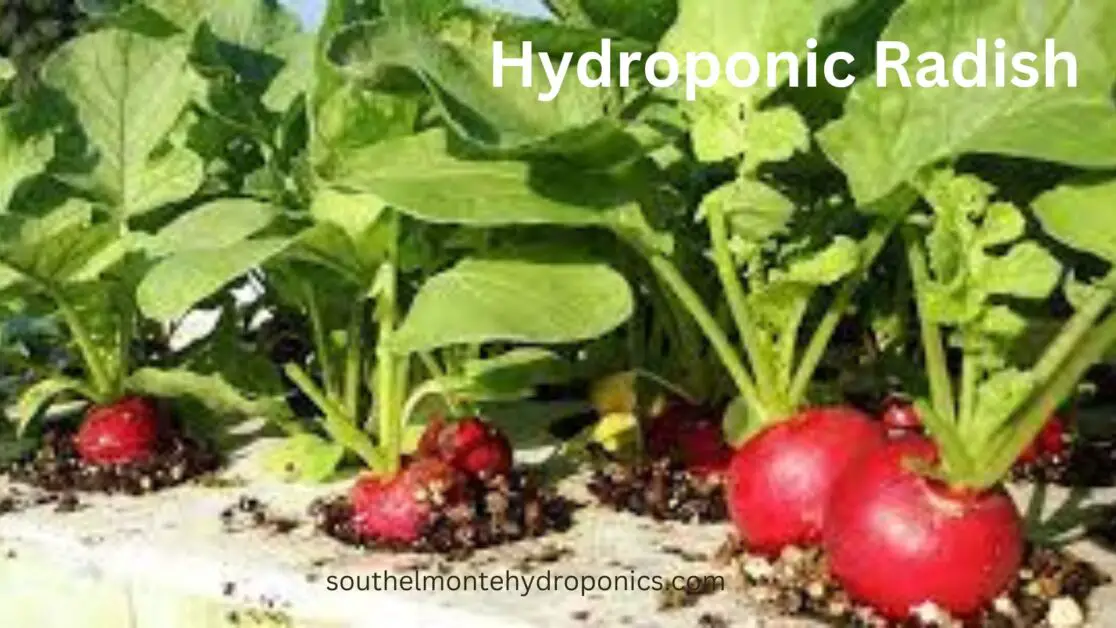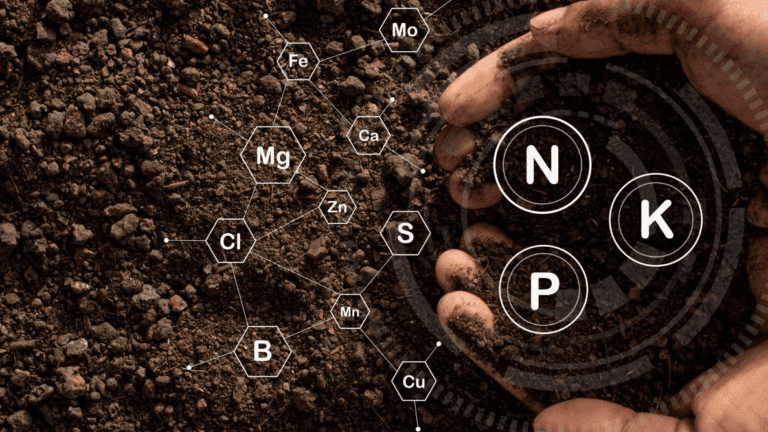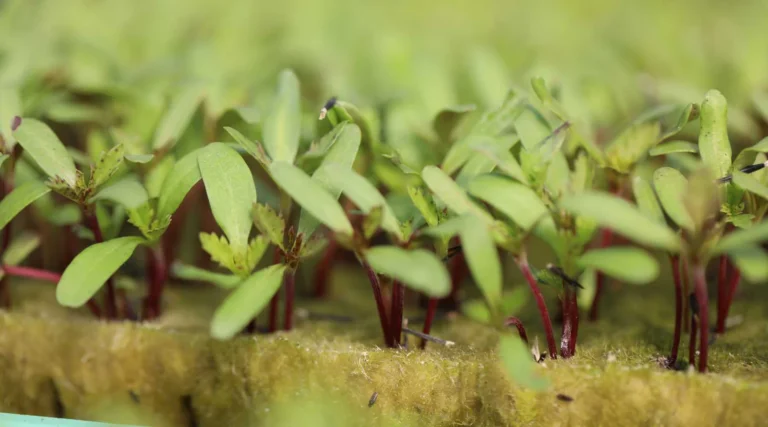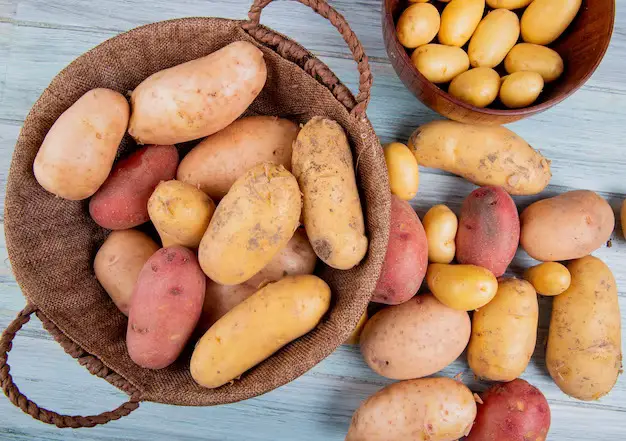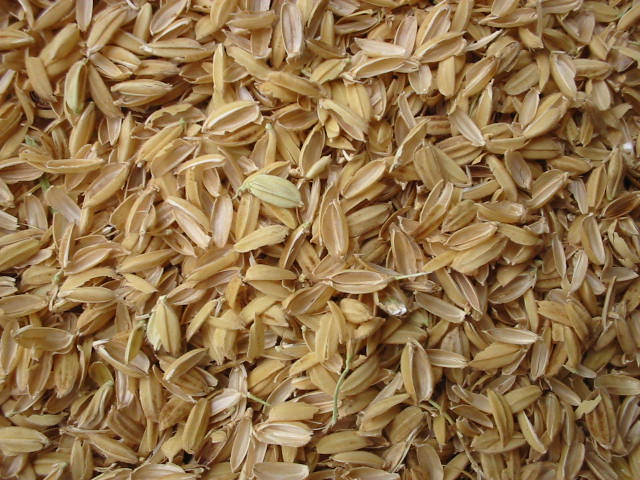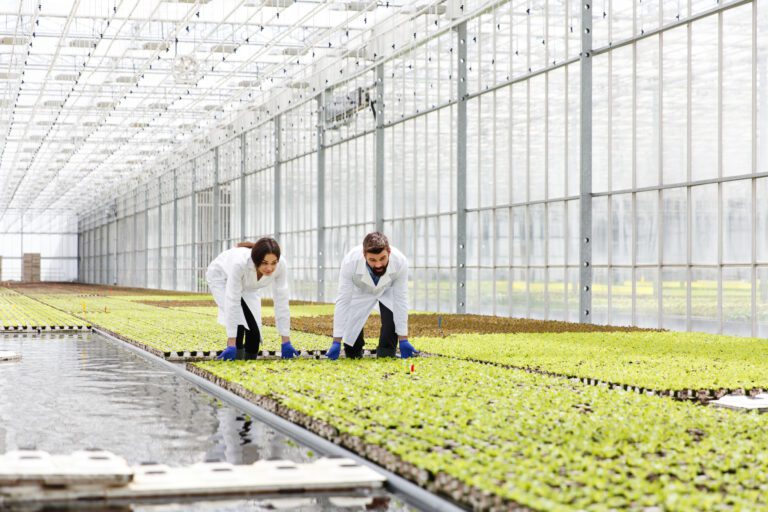Hydroponic Radish: Super No. #1 Way How to Grow Crispy and Spicy Radish in Water
Table of Contents
Understanding the Hydroponic Radish Growing Method
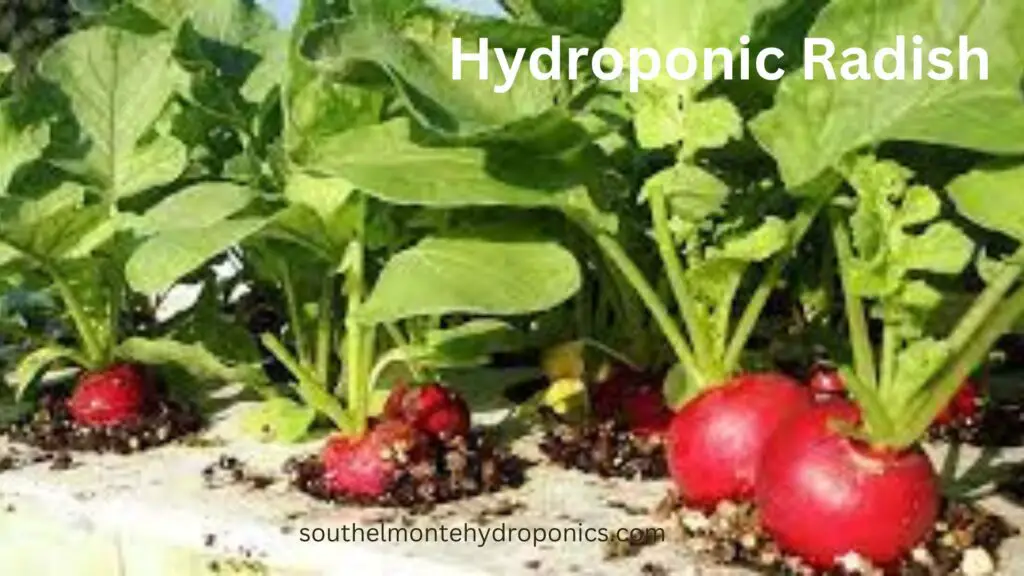
Hydroponics, a soilless method of cultivating plants, has gained immense popularity among gardening enthusiasts for its numerous advantages. When it comes to growing radishes using hydroponics, this method offers several benefits that contribute to higher yield and quality harvests.
One of the key advantages of hydroponics is the ability to control the growing environment. By providing the plants with precisely the right amounts of water, nutrients, and oxygen, hydroponics allows for optimal growth conditions. This eliminates the challenges associated with soil-based cultivation, such as variations in nutrient availability and the risk of soilborne diseases. Moreover, hydroponic systems can be set up indoors or in limited spaces, making it suitable for urban gardening or areas with poor soil quality.
In hydroponic radish cultivation, the nutrient-rich water solution serves as the primary substrate for plant growth. By incorporating the necessary macro and micronutrients, growers can ensure that the plants receive a well-balanced diet throughout their growth cycle. This not only stimulates faster growth but also enhances the nutritional value and flavor of the radishes. Additionally, hydroponic systems can be optimized to recycle and reuse the nutrient solution efficiently, minimizing waste and ensuring sustainable production practices.
Understanding the hydroponic growing method for radishes is the first step towards successful cultivation. Now that we have established the advantages of hydroponics and the significance of nutrient solutions, let’s delve into selecting the right radish varieties for hydroponic cultivation.
Selecting the Right Radish Varieties for Hydroponic Cultivation
When it comes to hydroponic cultivation of radishes, selecting the right varieties is crucial to the success of your harvest. Not all radish varieties are suited for growing in a hydroponic system, as their growth habits, root structures, and nutrient requirements can vary. Therefore, it is essential to choose varieties that are well-adapted to the controlled environment of a hydroponic setup.
One popular choice for hydroponic radish cultivation is the Cherry Belle variety. Known for its vibrant red color and crisp texture, Cherry Belle radishes are quick to mature, typically ready for harvest in just 21 to 28 days. This makes them a suitable choice for those who prefer a faster turnaround time.
Another great option is the French Breakfast variety, which is characterized by its elongated shape and mild, slightly spicy flavor. These radishes take slightly longer to mature, usually within 25 to 30 days, but their unique appearance and taste make them a favorite among culinary enthusiasts.
Creating a Suitable Hydroponic System for Radish Growth
When it comes to creating a suitable hydroponic system for radish growth, there are a few key factors to consider. Firstly, the type of system you choose will greatly influence the success of your radish cultivation. Two popular options for growing radishes hydroponically are the nutrient film technique (NFT) and the deep water culture (DWC) system.
In the NFT system, a thin film of nutrient-rich water continuously flows over the roots of the radish plants, providing them with the necessary nutrients. This system is ideal for radishes as it allows for ample oxygenation of the root zone and promotes healthy growth. On the other hand, the DWC system involves suspending the radish plants in a nutrient-rich solution, with their roots submerged in the water. This system offers a high level of oxygenation and provides excellent support for the plants’ growth.
Additionally, it is important to consider the size and spacing of the hydroponic system. Radishes have shallow root systems, so a relatively shallow growing container is sufficient. However, ensure that there is enough space between the plants to allow for proper air circulation and prevent overcrowding. This will reduce the likelihood of disease and promote healthy growth.
By carefully selecting the appropriate hydroponic system and ensuring proper spacing, you can create an ideal environment for radish growth. In the following sections, we will delve into the specifics of preparing the hydroponic solution, sowing radish seeds, and maintaining optimal lighting and temperature to further enhance the growth of your hydroponic radishes.
Preparing the Hydroponic Solution for Radish Plants
To ensure optimal growth and productivity of radishes in a hydroponic system, it is crucial to prepare a well-balanced and nutrient-rich hydroponic solution. The hydroponic solution serves as the primary source of nutrients for the radish plants, replacing the need for soil. By carefully providing the necessary elements, you can support healthy root development and robust foliage, resulting in bountiful radish harvests.
When preparing the hydroponic solution for radishes, it is essential to consider the specific nutrient requirements of these plants. Radishes thrive in a solution with a balanced composition of essential macronutrients, such as nitrogen (N), phosphorus (P), and potassium (K). These macronutrients are vital for various growth processes, such as leaf formation, root development, and overall plant vigor. Additionally, it is important to include micronutrients like iron, manganese, and zinc, which play critical roles in enzymatic reactions and overall plant health.
Properly measuring and mixing the nutrients in the hydroponic solution is crucial for the success of your radish cultivation. It is recommended to use high-quality, water-soluble fertilizer designed specifically for hydroponic systems. These fertilizers typically come with instructions and recommended dosages for different stages of plant growth. By following these guidelines, you can avoid nutrient imbalances or deficiencies that may hinder the growth and development of your radish plants.
To further enhance the effectiveness of the hydroponic solution, it is advisable to monitor its electrical conductivity (EC) and adjust it as needed. EC is a measure of the solution’s overall nutrient concentration, indicating the amount of dissolved salts. Regular monitoring helps ensure that the solution’s EC remains within the optimal range for radishes, promoting healthy plant growth. Adjustments can be made by either diluting the solution with water or adding more concentrated nutrients, depending on the specific needs of your radishes.
Stay tuned for the next section, where we will delve into the sowing process of radish seeds in a hydroponic setup. With the proper preparation of the hydroponic solution, you are setting the stage for successful radish cultivation and a bountiful harvest. Remember to consult reputable sources and closely follow best practices to create a balanced and high-quality solution that will support vigorous growth and robust radishes.
Sowing Radish Seeds in a Hydroponic Setup
Once you have set up your hydroponic system for radish cultivation, the next step is sowing the radish seeds. Before sowing, it is essential to ensure that the hydroponic setup has been properly cleaned and sterilized to prevent any potential disease or pest issues.
To sow radish seeds in a hydroponic setup, you will need to follow a few simple steps. Firstly, select high-quality radish seeds from a reputable supplier. It is important to choose varieties that are well-suited for hydroponic cultivation, as they have specific traits that make them thrive in this growing method.
Next, prepare a suitable growing medium for the radish seeds. Popular options for hydroponic radish cultivation include rock wool cubes or net pots filled with perlite or vermiculite. Moisten the growing medium before sowing the seeds to create a supportive environment for germination.
After preparing the medium, carefully place the radish seeds on the surface, ensuring they are evenly spaced. Gently press the seeds into the medium to secure them in place but be cautious not to bury them too deep, as radish seeds require light for germination. Once the seeds are in place, cover them lightly with a thin layer of growing medium to provide support while allowing for proper airflow.
Following these steps will help ensure successful germination of radish seeds in a hydroponic setup. In the next section, we will explore how to provide optimal lighting and temperature for healthy radish growth.
Providing Optimal Lighting and Temperature for Radish Growth
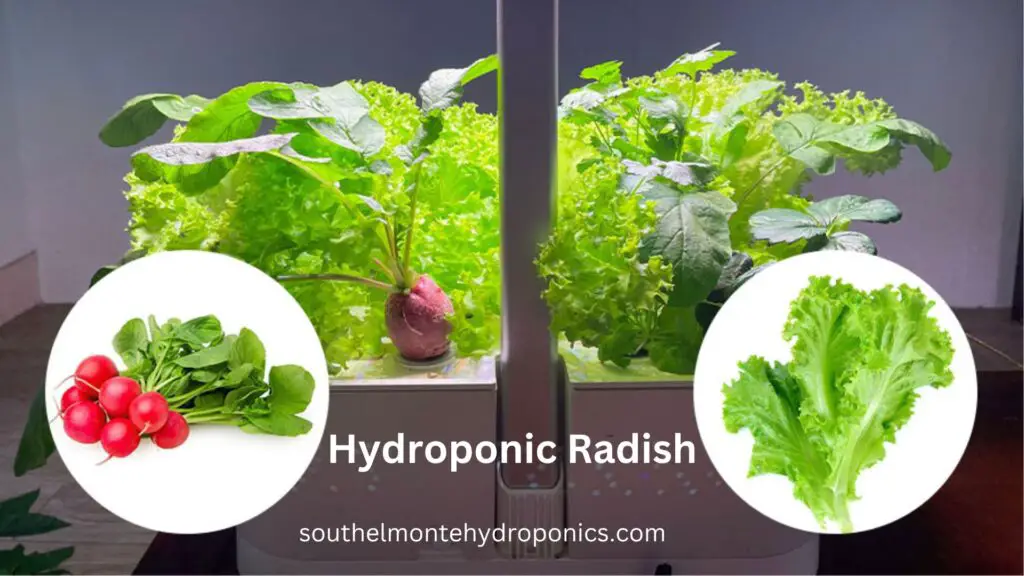
To ensure optimal growth and development of radishes in a hydroponic system, providing the right lighting and maintaining the ideal temperature are crucial. Radishes thrive under specific lighting conditions and temperature ranges, which can greatly influence their growth rate, yield, and overall quality.
When it comes to lighting, radishes require a minimum of 12 to 16 hours of light per day for optimal growth. LED grow lights are highly recommended for hydroponic setups as they provide the necessary light wavelengths for photosynthesis while being energy-efficient. Positioning the lights 6 to 12 inches above the plants ensures adequate light intensity. To promote even growth, using reflectors or rotating the trays periodically can help distribute light uniformly.
In terms of temperature, radishes prefer cooler conditions compared to other crops. The ideal temperature range for radish growth is between 50 and 70°F (10-21°C). Maintaining a consistent temperature within this range is crucial to prevent stunted growth or bolting. A cooling system, such as air conditioning or fans, can be employed to regulate the temperature in the hydroponic environment. Additionally, monitoring the temperature closely and adjusting accordingly will help ensure optimal growth and yield.
Maintaining Proper Nutrient Levels in the Hydroponic Solution
Maintaining proper nutrient levels in the hydroponic solution is crucial for ensuring healthy and vigorous radish plants. Without adequate nutrients, the plants may suffer from stunted growth, nutrient deficiencies, or even die prematurely. Here are a few key considerations to help you maintain optimal nutrient levels in your hydroponic system.
Firstly, it is essential to understand the specific nutrient requirements of radishes during different growth stages. Radishes thrive on a balanced nutrient solution containing macronutrients such as nitrogen (N), phosphorus (P), and potassium (K), as well as essential micronutrients like calcium (Ca), magnesium (Mg), and iron (Fe). Monitoring the nutrient levels regularly through accurate testing and analysis will allow you to fine-tune the solution to meet the plants’ precise needs.
Secondly, selecting a high-quality nutrient solution formulated for hydroponic radish cultivation is paramount. It is advisable to opt for a complete solution that provides all the necessary macro and micronutrients in their required proportions. Commonly available hydroponic nutrient products like liquid or powder concentrates can be used, ensuring they are specifically designed for hydroponics and are suitable for radish cultivation.
Remember, maintaining proper nutrient levels is a delicate balance in hydroponics, as excessive amounts can be just as harmful as deficiencies. By regularly monitoring nutrient levels, adjusting the solution as needed, and adhering to the recommended dosages, you can provide your hydroponic radish plants with the ideal nutrient environment for optimal growth and bountiful harvests.
Monitoring and Adjusting pH Levels for Healthy Radish Plants
Maintaining the correct pH levels is crucial for ensuring healthy growth and development of radish plants in a hydroponic system. The pH level of the nutrient solution directly affects the availability of essential nutrients to the plants, as well as their ability to effectively absorb these nutrients. Therefore, it is essential for hydroponic gardeners to regularly monitor and adjust the pH levels to create an optimal growing environment for radishes.
To begin with, it is important to understand the ideal pH range for radish plants. Generally, the recommended pH range for hydroponic radish cultivation falls between 5.5 and 6.5. This slightly acidic to slightly alkaline range allows for efficient nutrient uptake, promoting vigorous growth and healthy radish development.
Regular monitoring of the pH levels is crucial to ensure that they remain within the desired range. This can be done using pH testing kits or pH meters specifically designed for hydroponic systems. By regularly checking the pH levels of the nutrient solution, gardeners can pinpoint any deviations and take corrective measures promptly. Adjustments can be made by adding pH buffering solutions like potassium hydroxide (to raise pH) or phosphoric acid (to lower pH) to the nutrient solution. By maintaining the pH within the recommended range, hydroponic gardeners can ensure optimal nutrient availability and uptake for healthy radish plants.
Managing Watering and Oxygenation in the Hydroponic System
Watering and oxygenation are essential components of a successful hydroponic system for radish cultivation. Proper management of these factors ensures that the plants receive the necessary nutrients and oxygen for healthy growth.
When it comes to watering, it is important to strike a balance between providing adequate moisture and preventing waterlogged conditions. Overwatering can lead to root rot and invite the growth of harmful pathogens, while underwatering can cause stunted growth and nutrient deficiencies. To maintain optimal moisture levels, it is recommended to monitor the moisture content of the growing medium regularly. This can be done by inserting a moisture probe or simply using a finger to assess the moisture level. When the medium feels slightly dry to the touch, it is an indication that the plants require water. It is advisable to use a timed watering system to ensure consistent and controlled watering intervals.
In addition to watering, oxygenation of the hydroponic system is crucial for the development of healthy radish plants. Plants obtain oxygen through their roots, which is necessary for the uptake and utilization of nutrients. Insufficient oxygen levels can lead to oxygen starvation, affecting the overall health of the plants. To maintain adequate oxygenation, it is essential to ensure proper aeration of the growing medium. This can be achieved by using materials such as perlite, vermiculite, or coco coir in the hydroponic setup, which promote good airflow around the root zone. Additionally, the use of air stones or diffusers in the nutrient solution reservoir can help in increasing oxygen levels. Monitoring dissolved oxygen levels in the system is recommended to ensure that it stays within the desired range for optimal plant growth.
By effectively managing watering and oxygenation in your hydroponic system, you can create an environment that promotes healthy radish growth. Monitoring moisture levels and providing adequate oxygen will help ensure that your plants receive the necessary nutrients and thrive in their hydroponic environment
Here’s a table providing information about growing radishes hydroponically:
| Aspect | Description |
|---|---|
| Radish Variety | Hydroponic radish varieties include Cherry Belle, Easter Egg, and Daikon. Choose based on your preference. |
| Growing Medium | Hydroponic systems can use inert mediums like perlite, coconut coir, or rockwool cubes for radish cultivation. |
| Nutrient Solution | Provide a balanced hydroponic nutrient solution with essential macro and micronutrients for radish growth. |
| pH Range | Maintain a pH range between 5.8 and 6.5 for optimal nutrient uptake by radish plants in hydroponic systems. |
| Temperature and Light | Radishes thrive in temperatures between 50-70°F (10-21°C) and require 12-16 hours of light per day. Use grow lights for indoor hydroponics. |
| Hydroponic System Types | Suitable systems include nutrient film technique (NFT), deep water culture (DWC), or flood and drain systems. |
| Seed Germination and Transplanting | Start radish seeds in a hydroponic-friendly medium or germination tray and transplant seedlings into the hydroponic system once they have developed true leaves. |
| Spacing and Plant Density | Follow recommended spacing for the specific radish variety. Adequate spacing prevents overcrowding and encourages proper root development. |
| Growing Duration | Radishes typically mature within 20-30 days, making them a quick and rewarding hydroponic crop. |
| Nutrient Adjustments | Monitor nutrient levels and adjust the solution as needed during the growth cycle to ensure optimal plant nutrition. |
| Harvesting | Harvest radishes when they reach the desired size. For most varieties, this is typically around 3-4 weeks after planting. |
| Pest and Disease Management | Inspect regularly for pests and diseases. Hydroponic systems may reduce some pest issues, but preventive measures are still essential. |
| Flowering and Bolting | Radishes are sensitive to high temperatures and can bolt (produce a flowering stalk) prematurely. Maintain optimal temperatures to prevent bolting. |
Growing radishes hydroponically can be a rewarding experience, providing a quick turnaround for fresh and crisp radishes. Pay attention to environmental factors, nutrient levels, and proper spacing for successful hydroponic radish cultivation.
Preventing and Treating Common Pests and Diseases in Hydroponic Radishes
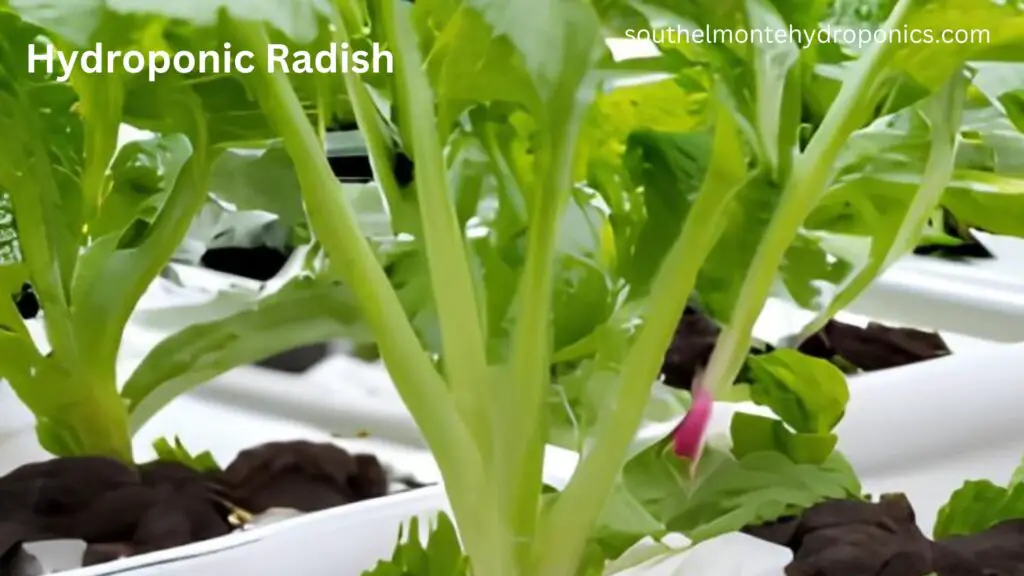
Hydroponic radish cultivation offers many advantages, but just like any plant, radishes are susceptible to pests and diseases that can hinder their growth and diminish their overall quality. However, with proper prevention and timely treatment, you can ensure your hydroponic radishes stay healthy and thriving.
Prevention is crucial when it comes to managing pests and diseases in hydroponic radishes. Maintaining a clean growing environment is the first step in keeping unwanted invaders at bay. Regularly inspect your plants for any signs of pests such as aphids, spider mites, or whiteflies. Implementing physical barriers like fine mesh screens can prevent these pests from entering your hydroponic system.
In addition to physical barriers, beneficial insects like ladybugs or predatory mites can be introduced to control pest populations naturally. These beneficial insects feed on common pests and help maintain a balanced ecosystem within your hydroponic setup.
Alongside pest prevention, ensuring the proper sanitation of your hydroponic system is essential in combating diseases. Start by sterilizing all equipment, including growing trays, pipes, and nutrient tanks to eliminate any potential pathogens. Regularly monitor your plants for any signs of disease, such as discoloration, wilting, or unusual growth patterns, and promptly remove and dispose of infected plants to prevent further spreading.
By employing these preventive measures, you can significantly reduce the risk of pests and diseases in your hydroponic radishes. However, despite your best efforts, sometimes pests or diseases may still find their way into your system. In the next section, we will explore effective treatment methods to combat these common issues and safeguard the health of your hydroponic radishes.
Harvesting Hydroponic Radishes at the Peak of Crispiness and Spiciness
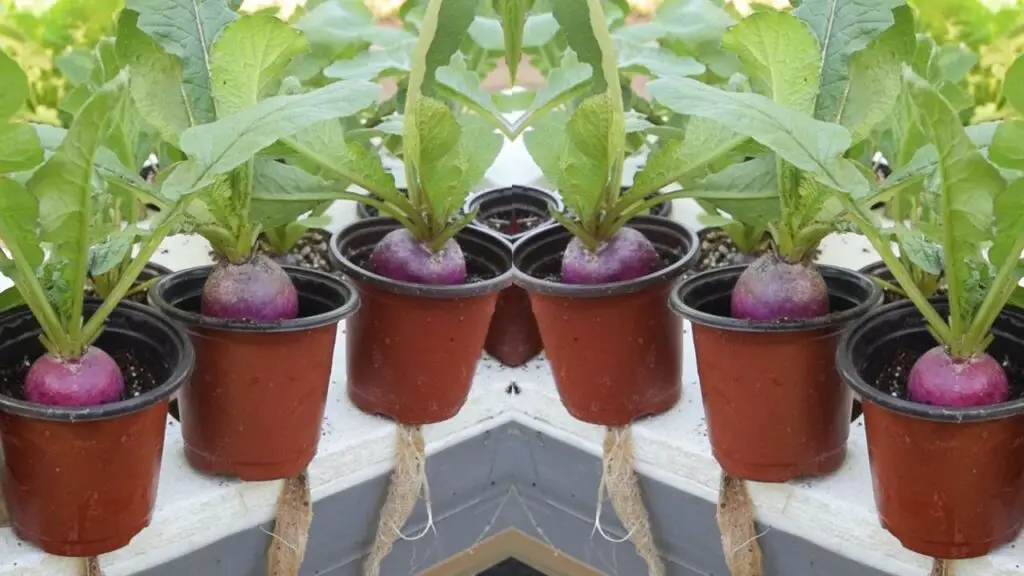
Once your hydroponic radishes have reached their peak of crispiness and spiciness, it’s time to harvest them and savor their flavors. Harvesting at the right time ensures that you enjoy radishes with optimal texture and taste. To determine when your radishes are ripe for harvest, you can observe their growth and appearance. Ideally, radishes should have reached their mature size, with a smooth, vibrant skin, and a firm texture. Some varieties may also exhibit a specific color change, such as a deep red or a bright white, indicating their readiness for picking. Remember that radishes can mature quite quickly, so it’s crucial to regularly check their progress to avoid over-ripening.
When harvesting hydroponic radishes, it’s essential to handle them with care to preserve their quality. Start by gently gripping the base of the radish, close to the growing medium, and give it a slight twist or pull. The radish should easily detach from the roots, leaving you with a neat and intact vegetable. Avoid pulling too hard or yanking the radish forcefully, as this can damage the plant and affect the overall quality of your harvest. Once picked, promptly clean the radishes by washing them under cool running water to remove any dirt or debris. Then, pat them dry with a clean towel before storing or using them for culinary delights.
As you become more experienced with hydroponic radish cultivation and harvest, you may start to develop a keen eye for identifying the perfect moment to pluck these delightful vegetables. Experimenting with different varieties and observing their growth patterns can further enhance your harvesting skills. By mastering the art of harvesting hydroponic radishes at their peak of crispness and spiciness, you will undoubtedly elevate your culinary creations and experience the full potential of these vibrant and tasty delights.
Storing and Using Hydroponic Radishes for Culinary Delights
Once you have successfully harvested your hydroponic radishes at the peak of their crispiness and spiciness, it is important to store them properly to maintain their quality and taste. Hydroponic radishes have a shorter shelf life compared to conventionally grown radishes, so it is crucial to handle and store them with care.
To store hydroponic radishes, start by removing any excess moisture from the plants. This can be done by gently patting them dry with a clean cloth or paper towel. Avoid washing the radishes before storage, as any moisture left on the surface can promote the growth of mold or bacteria.
Next, separate the radish greens from the roots. The greens, if fresh and vibrant, can be stored separately and used in culinary preparations, such as salads or sautés. Trim the roots to remove any excess foliage or roots that may have been damaged during harvest.
Once the radishes have been properly trimmed, they can be stored in the refrigerator. Place them in a perforated plastic bag or airtight container to maintain humidity while allowing for airflow. The ideal temperature for storing radishes is around 32 to 40°F (0 to 4°C), which helps to slow down the deterioration process and prolong their freshness.
When it comes to using your hydroponic radishes, their crisp texture and peppery flavor make them a delightful addition to a variety of culinary dishes. Whether you prefer to enjoy them raw in salads or sandwiches, or cooked in soups, stews, or stir-fries, hydroponic radishes can bring a fresh and vibrant touch to your meals.
Experiment with different cooking techniques to explore their versatility. Roasting or grilling radishes can mellow their spiciness and enhance their natural sweetness, while pickling can add a tangy and zesty flavor profile. You can also incorporate them into slaws or coleslaws for a refreshing crunch.
Remember, the key to maximizing the flavor and texture of your hydroponic radishes is to use them as soon as possible after harvest. The longer they are stored, the more their taste and texture may deteriorate. So, take advantage of their freshness and savor the unique qualities of hydroponic radishes in your culinary endeavors.
Exploring Advanced Techniques and Innovations in Hydroponic Radish Cultivation
In recent years, there has been a surge of interest in advanced techniques and innovations in hydroponic radish cultivation. As gardeners and botanists continue to explore the potential of this method, exciting new developments are revolutionizing the way we grow radishes hydroponically. From cutting-edge technology to novel approaches, these advancements are not only improving yields but also enhancing the overall quality of the harvested radishes.
One noteworthy innovation in hydroponic radish cultivation is the use of vertical farming systems. By utilizing vertical space, growers are able to maximize the number of plants that can be grown in a limited area. This method not only increases productivity but also reduces the need for land, making it especially beneficial in urban environments where space is limited. Additionally, vertical farming systems provide a more controlled environment, allowing for precise temperature, humidity, and lighting control. This optimization of growing conditions can result in faster growth, higher yields, and healthier radish plants.
Another area of interest in hydroponic radish cultivation is the exploration of alternative nutrient solutions. Traditionally, hydroponic systems rely on a mix of essential nutrients dissolved in water to nourish the plants. However, researchers are now investigating the use of organic and sustainable nutrient sources. By incorporating organic matter, such as compost or worm castings, into the hydroponic solution, growers can provide a more natural and environmentally friendly source of nutrients for radish plants. These alternative nutrient solutions also have the potential to enhance the flavors and nutritional profiles of the harvested radishes, presenting an exciting opportunity for those looking to elevate their culinary creations.
As the field of hydroponic radish cultivation continues to evolve, gardeners and growers need to stay updated on the latest advancements and techniques. These innovative approaches hold immense potential for improving productivity, sustainability, and the overall quality of hydroponically grown radishes. By embracing these new methods and exploring cutting-edge innovations, enthusiasts can cultivate radishes like never before, pushing the boundaries of what is possible in the world of hydroponics.
What are some advanced techniques for hydroponic radish cultivation?
Some advanced techniques for hydroponic radish cultivation include using vertical farming systems, implementing automated nutrient delivery systems, and utilizing advanced LED lighting technology for optimal growth.
How can one increase the yield of hydroponic radishes?
To increase the yield of hydroponic radishes, it is important to maintain proper nutrient levels in the hydroponic solution, provide optimal lighting and temperature conditions, and ensure sufficient oxygenation and watering of the plants. Additionally, using suitable radish varieties and implementing advanced techniques such as foliar feeding can also contribute to higher yields.
Are there any innovative methods for pest and disease control in hydroponic radish cultivation?
Yes, innovative methods for pest and disease control in hydroponic radish cultivation include using biological controls such as beneficial insects or nematodes, implementing integrated pest management strategies, and employing advanced monitoring systems for early detection of pests and diseases.
Can hydroponically grown radishes be stored for a long time?
Hydroponically grown radishes can be stored for a limited period, typically up to a few weeks, if stored properly. It is recommended to store them in a cool and dark place with high humidity to maintain their freshness and crispiness.
Can hydroponic radishes be used in various culinary dishes?
Yes, hydroponic radishes can be used in various culinary dishes. They can be enjoyed raw in salads, pickled, or used as a crunchy and spicy addition to sandwiches, stir-fries, and other cooked dishes.
Are there any ongoing research or developments in hydroponic radish cultivation?
Yes, ongoing research and developments in hydroponic radish cultivation focus on improving nutrient delivery systems, optimizing lighting technologies, exploring new varieties suitable for hydroponics, and studying the impact of different environmental factors on radish growth and quality.

